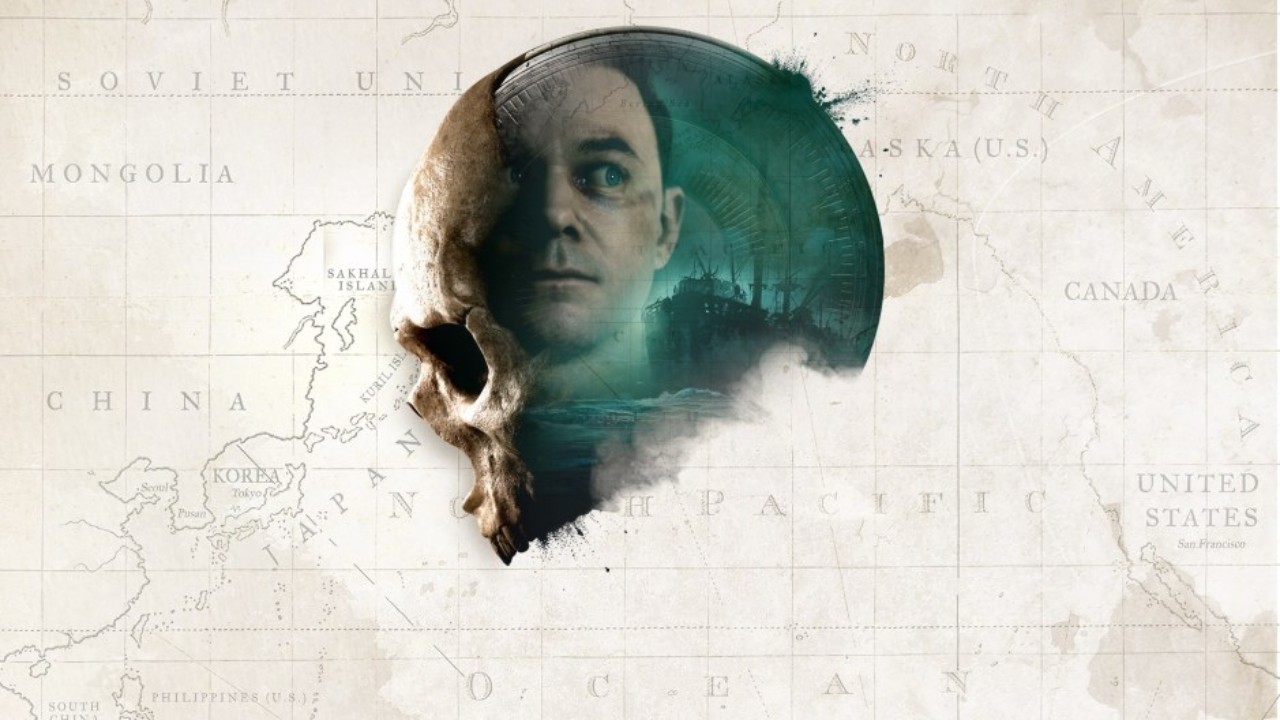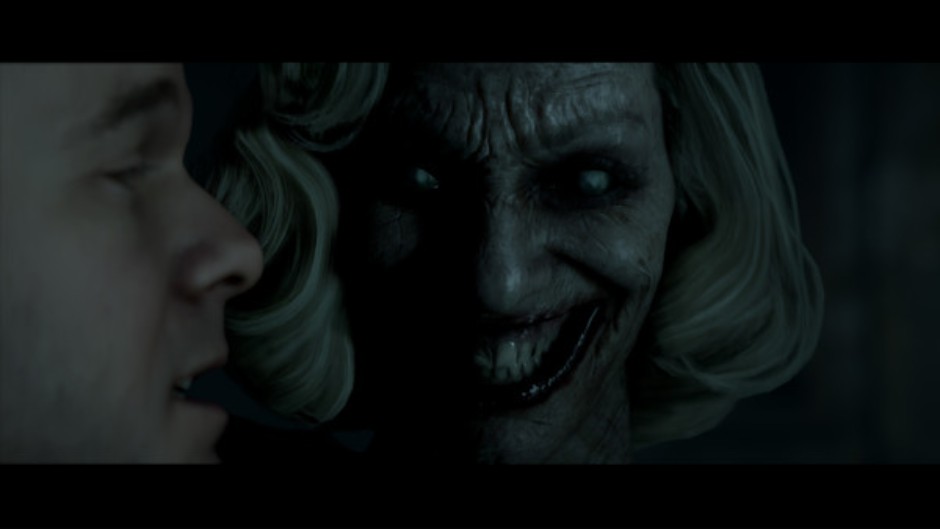Developed By: Supermassive Games
Published By: Bandai Namco Entertainment
Platforms: PS4 / PC / Xbox One
Reviewed On: PS4PRO
When Supermassive released their teen slasher horror game Until Dawn in 2015, current-gen console owners got a taste on how clichéd horror games are like. Until Dawn was a hit and miss but for the most part, it still drives home what it intends to deliver, a straight-up horror experience that plays true to its tropes. Fast-forward to 2019, the team releases yet another horror genre title called Dark Pictures Anthology: Man of Medan. As the title suggests, Man of Medan is the first of eight in the planned instalments of Dark Pictures. So how does Supermassive’s latest horror title fare? Let us find out.
Man of Lore & Story
The similarity between Until Dawn and Man of Medan is that both features a bunch of young adults being at places they shouldn’t be at and doing things they shouldn’t be doing even when warnings were given. All the basic recipe of how a horror game should ever start. The story in Man of Medan is one that involves known lore and couple with fictional elements to drive the story throughout the game. The game is inspired by an actual urban legend of the Ourang Medan ship in which all of the crew members died in the most bizarre circumstances which can be seen throughout the game. While the game is an actual representation of what actually transpired inside the ship but it gives a depth of creepiness knowing the actual ship is actually down under the sea out there.
While Until Dawn can feel like watching your typical American horror movie that is full of stereotypical nuances, Man of Medan has opted for a more realistic approach. Five young adults, namely Alex, Brad, Julia, Fliss, and Conrad (who is played by Shawn Ashmore), while may still feel a tad stereotypical, are not as cringeworthy as they were in Until Dawn. That said, however, the character building in the game feels rather incomplete. At the start of the game, the flow of the game starts off pretty slow likely in hopes to introduce the characters. However, one can’t help but feel that it could’ve done better. Each time a new character comes in, you will be shown their name and their initial character traits (which somewhat plays a role in the mechanics but more to that later). There was very little character build up during the early parts of the game and straight-up you will be thrown into the ship where all the horror and death begins. That said, as a player, you don’t feel a connection to them and when your choices lead to their deaths, there is little to no emotional attachment for them and you may well treat it as ‘oh one of them just died, ok move on’.
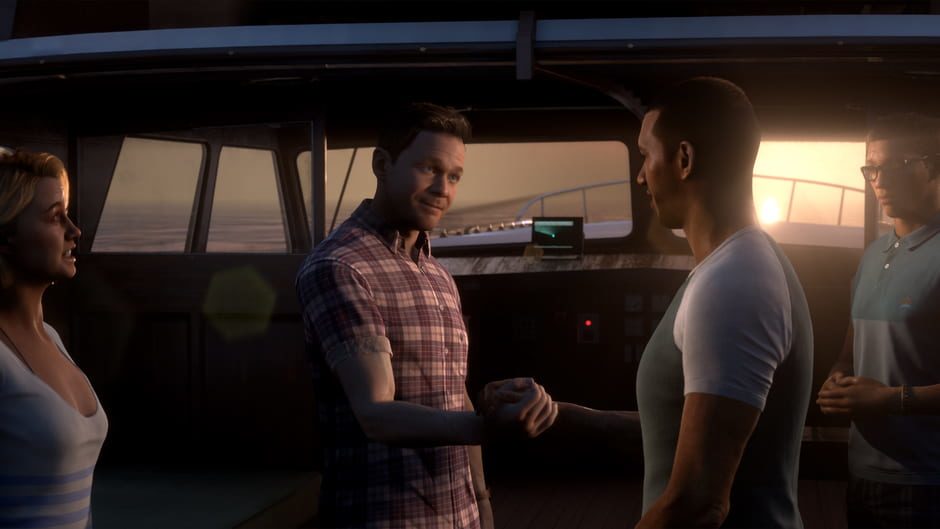
Men of Story Sharing
Man of Medan introduces two new ways of playing the game apart from the Solo mode. The aptly named Don’t Play Alone mode gives two choices, Shared Story and Movie Night. Both modes are rather interesting as Shared Story is the Online Mode for the game whereby the host can invite a friend (provided the friend has the full game as well) and play through the story simultaneously. By simultaneously means both you and your friend will be experiencing the story from a different perspective whilst progressing at the same time. For instance, at one of the early levels of the game, one player may take control Brad which he will be diving under the sea with Julia, while the other player will take control of Alex conversing with Fliss and Conrad on the ship. This actually opens more scenes being played that are otherwise truncated in the Solo and Movie Night modes.
For Movie Night, this mode is meant for couch co-op where you can play up to 5 friends and each will be handed the controller on to choose which of the five characters they wish to play as. The idea of movie night is to get everyone to involve in the discussion when it comes to those decision-making moments. It is like having a party for watching a late-night movie but with more interactivity involved because everyone gets to have their say on how the story should go. It is an interesting concept not many games have attempted.
Both modes offer a different experience in playing the game. One opens a more narrative aspect of the story while the other involves more interaction with your fellow friends. Both modes have small nuances but Shared Story is definitely the best way to play the game as it gives the full-circle experience of the entire story.

Man of Visuals
In all honesty, there is very little can be said nor shout about in the graphics department here. There isn’t much of a change nor an upgrade. Much like Until Dawn, the visual fidelity is towards an almost realistic look with character facial animation changes to show how they feel emotionally. Although it can be somewhat a little too extreme with some of them looking like they are having constipation when you make an unfavourable dialogue choice. While the characters may look realistic and all, the environment, however, is all dark and gloomy. It does lend towards the whole scary atmosphere, considering that the whole game is just around the ship, you will be seeing a lot of the same dull, muddled colours inside of the ship. Don’t expect anything that pops up and makes you go wow but instead would make you scream and shocked. Believe me, there is plenty of that here.
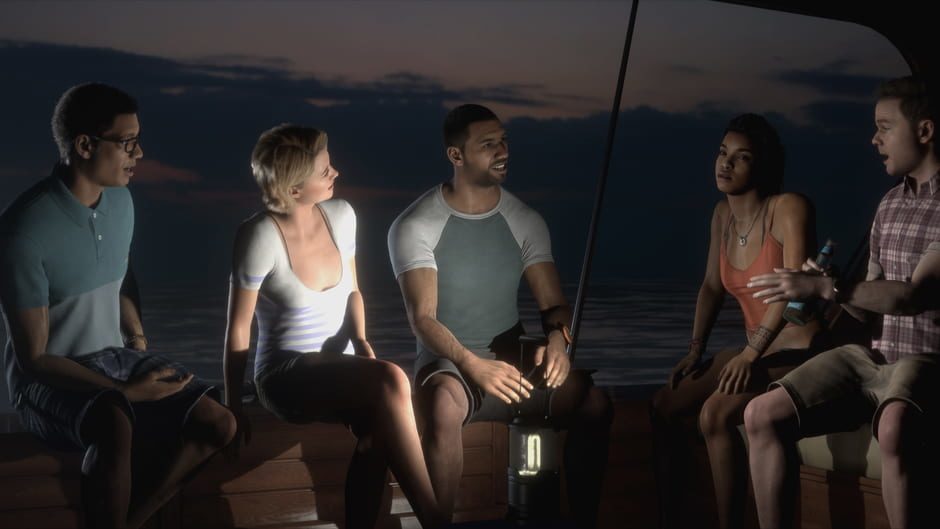
Man of (overly-used) scares
Let’s face it, horror genre titles need to be coupled with jump scares be it games or even movies. Jump scares are actually good elements that what makes a horror genre a horror genre. However, as the saying goes ‘Too much of a good thing can be a bad thing’ and it really applies to here. While Until Dawn does use it to great lengths, it gives adequate breathing space so that the next one does not come too soon or feels too often. Man of Medan however, emphasize them at every corner you step into. You walk into a corridor; something pops up at the corner then moving forward you see a casket and you open it and suddenly a hand pops up trying to grab your face. Word of caution, if you are someone that is weak to this kind of thing, best to avoid this game.
Jump scares are great to instil suspense to the audiences as it preys on the unexpected sense in them. However, when a jump scare happens, people would’ve set up a barrier on their minds because they are expecting the next one coming. When the game throws another one not long after the previous one, the novelty can start to wear off pretty quickly. It may still scare the daylights for some but the effect will not be on the full extent. Furthermore, the game incorporates certain camera angles that are typically used in horror genres. Many points or areas in the game, these different camera angle shots can also contribute to the feeling of suspense and fear. However, these come on out as often as the aforementioned jump scares. Many of times the camera angle itself becomes a dead give away as because it can notify you something is about to happen. While the techniques mentioned are not at all bad but in fact can be used with full advantage, however, there is just too many of them here.

Choices, Consequences & Imperfections
Making choices is one of the main highlights in Man of Medan. Throughout the entire game, you will be given choices to make through conversations between the characters and picking up certain items that would make an impact simultaneously or later on. This is where Man of Medan differs than Until Dawn. While branching routes is the main backbone for both games, Man of Medan takes it a step further. Until Dawn draws its scenes based on which character that lives through, Man of Medan based entirely on the choices made. This means that the game has more than double the scenes based on the number of combinations of choices that were made. Which means also, the different combination can result in different scenes that will play out after which therefore encourages even further replayability.
Other features such as premonitions which can be viewed through pictures hanging on the wall. When viewing one, it will give you a glimpse of a possible outcome that could lead to new routes or deaths of certain characters. While that may seem quite daunting, the choices given are somewhat simpler and more straightforward here comparative to Until Dawn. Each time, you will be given with three choices in a dialogue in the form of a Moral Compass that is divided between character’s heart (which is their gut feelings) or their head (intellectual response) whilst the third choice is by not answering anything.
Furthermore, certain choices will be tracked in what is called Life Bearings. These Life Bearings tracks the choices that were made at every major turning point throughout the game. Each of these bearings will be filled as the story progresses in which you reach the final conclusion based upon the major decisions that were made. If you are unhappy in how things turned out, you can refer back to the bearings and tracked what actually caused the final outcome. Nonetheless, the Life Bearings does not bear any fruitful information other than a short and brief description of each choice made.
As mentioned way earlier, another mechanic added in is Character Traits which changes as certain dialogue or action choices that are made. For instance, Fliss is introduced as reckless but her recklessness can change to be more cautious depending on the choices or actions that were chosen. However, many of the characters I have played have made many changes in their traits but it doesn’t seem to play anything major in the game as choices and scenes still play out the same. However, there is a good chance I may have missed subtle hints to it and may need to get back into the game and investigate further.

Man of Bland Acting
While it can be really entertaining to watch the outcome from the decisions that were made, the character themselves, however, don’t seem to react and respond correctly. Furthermore, the dialogues between characters can really sound rather unrealistic and inorganic. For instance, when there was a proposal scene between two lovebirds, you can choose to either deny the proposal due to uncertainty or you can accept it gleefully. Choosing either would result in the character giving a rather pokerfaced expression. Not to mention as well that the voice acting itself is quite the far cry from Supermassive’s previous game which showcased pretty good voice acting. It is a shame as well considering Shawn Ashmore lent his face and voice in the game and yet his performance here is rather subpar. That said, it isn’t entirely terrible but you will get the inkling to feel that it could’ve been done better.
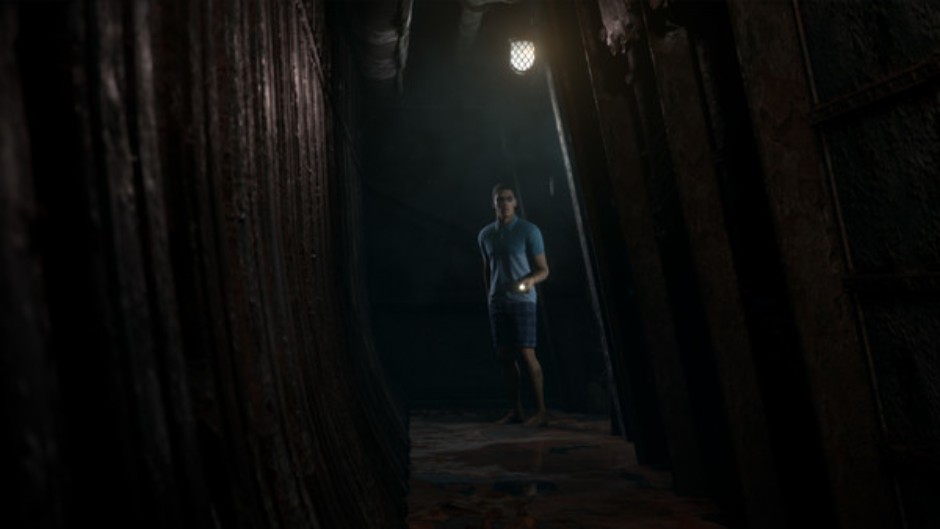
What I Liked
The abundance in difference scenes based on a different combination of choices made is very refreshing and enticing to experience. When I made one choice and seeing how the outcome played and noticing the subtle differences truly got me wanting to replay the game again and make a different combination of choices to see how it’s going to play out. I felt absolutely relieved that Supermassive has withdrawn from the stereotypical nuances in the story and character and instead inject more believable archetype characters as well as the story elements in it.
While the choices given in dialogues can look rather simple and limited, they still represent directly what they meant. Unlike most games of the same genre where the choices don’t exactly mean as it is said thus creates confusion and detachment from certain dialogues. Man of Medan proves that simple and straightforward answers are still best in relatability to players.
The Co-op is the best way to actually gives the best experience in playing the game. Not to downplay Solo players but often times especially when playing it for the first time, the game’s odd pacing can make understanding the story a little disjointed however the Shared Story mode immediately remedied this by having two players having experienced those missing elements of the story together provided each have to take turns to replay again by switching the roles, which encourages further replayability, which is a good thing.
What I Didn’t Like
As mentioned much earlier, the jump scares just happened way too often and way too overly used for my liking. I appreciate jump scares (I get scared easily) but to use it at every given corner is totally not cool and it really breaks the novelty really quickly and it can even spoil good storytelling. On the subject of the story, while I think the story isn’t entirely bad but it doesn’t really stand out much and coupled with poor character building, it is just not the game’s major strength. A shame considering the game of this genre actually relied a lot on the story department. In addition, the game is actually a lot shorter which can be completed within 6-7 hours.
The game feels like it does not want to give itself adequate space and time to fully develop its characters and gives itself proper time to properly unfold the story from start to finish. Due to this, many inconsistencies appear in the flow of story and it can feel rather off-putting. The inconsistencies even appear on the routes that were chosen. For instance, and without spoiling much, when one of character meets up with another and somehow stumble upon a situation which got one of them killed. The next scene when the remaining group gathers, the earlier character never mentioned that he met up with the one that got killed.
Another major downer for me is how the game performs. At times the game has some performance issues which results in a drop in framerates to micro lags during cutscenes. It isn’t exactly a huge problem as performance issues can still be rectified with subsequent updates, however, it can still be a mood breaker for some.
What I Hope It Will Improve On
Considering it is an Anthology means there is still space to further improve the series. Supermassive has the creativity level to bring the next one to greater heights in storytelling. What I hope to see are that future Dark Picture games to have a better grasp in character development which can give players an emotional attachment, making them either worth saving or feel saddened on their deaths. Furthermore, Supermassive should try to incorporate more elements that play on the senses and feelings of players instead of relying entirely on cheap jump scares all the time. Some times using certain sound cues or cleverly placed lighting can actually induce a frightful moment.
Conclusion & Verdict
Man of Medan is a good game provided you truly enjoy jump scares (and your heart can actually take it). While the game is hampered by some faults, it still can provide a good solid 6 to 8 hours of frightful moments. While the game encourages multiple playthroughs, the experience will not be the same as when you first started because of the rather disappointing and very less frightful revelation towards the end.
